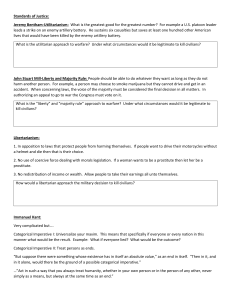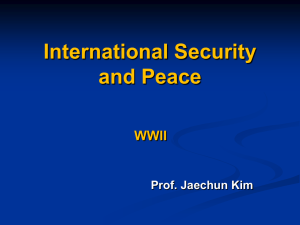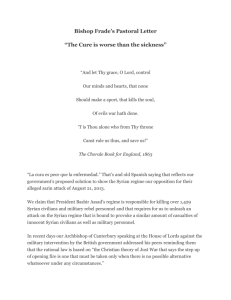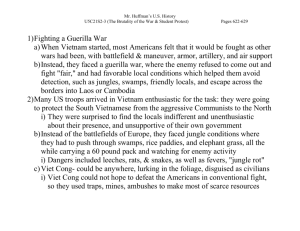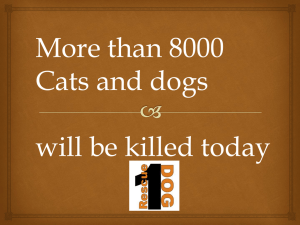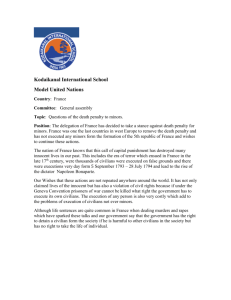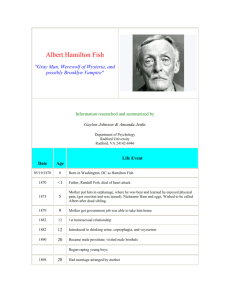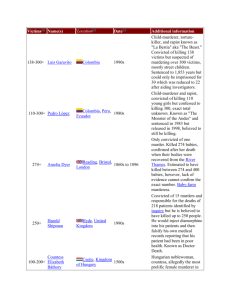“Hell is Coming” - Fragments of horror from World War One 28th July
advertisement
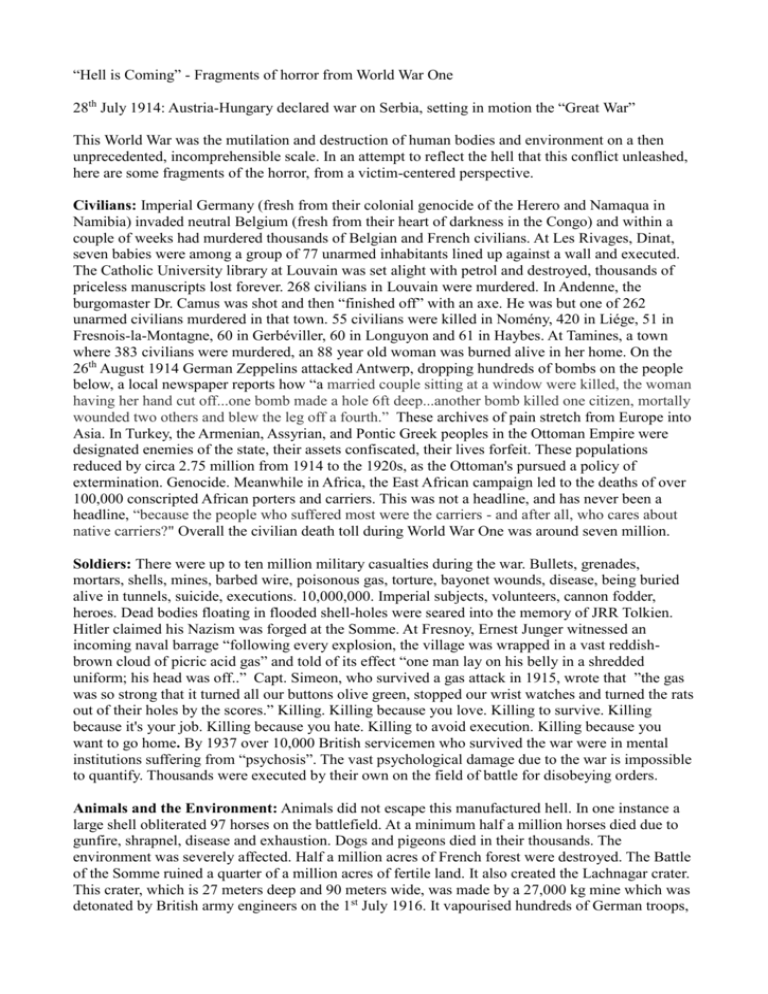
“Hell is Coming” - Fragments of horror from World War One 28th July 1914: Austria-Hungary declared war on Serbia, setting in motion the “Great War” This World War was the mutilation and destruction of human bodies and environment on a then unprecedented, incomprehensible scale. In an attempt to reflect the hell that this conflict unleashed, here are some fragments of the horror, from a victim-centered perspective. Civilians: Imperial Germany (fresh from their colonial genocide of the Herero and Namaqua in Namibia) invaded neutral Belgium (fresh from their heart of darkness in the Congo) and within a couple of weeks had murdered thousands of Belgian and French civilians. At Les Rivages, Dinat, seven babies were among a group of 77 unarmed inhabitants lined up against a wall and executed. The Catholic University library at Louvain was set alight with petrol and destroyed, thousands of priceless manuscripts lost forever. 268 civilians in Louvain were murdered. In Andenne, the burgomaster Dr. Camus was shot and then “finished off” with an axe. He was but one of 262 unarmed civilians murdered in that town. 55 civilians were killed in Nomény, 420 in Liége, 51 in Fresnois-la-Montagne, 60 in Gerbéviller, 60 in Longuyon and 61 in Haybes. At Tamines, a town where 383 civilians were murdered, an 88 year old woman was burned alive in her home. On the 26th August 1914 German Zeppelins attacked Antwerp, dropping hundreds of bombs on the people below, a local newspaper reports how “a married couple sitting at a window were killed, the woman having her hand cut off...one bomb made a hole 6ft deep...another bomb killed one citizen, mortally wounded two others and blew the leg off a fourth.” These archives of pain stretch from Europe into Asia. In Turkey, the Armenian, Assyrian, and Pontic Greek peoples in the Ottoman Empire were designated enemies of the state, their assets confiscated, their lives forfeit. These populations reduced by circa 2.75 million from 1914 to the 1920s, as the Ottoman's pursued a policy of extermination. Genocide. Meanwhile in Africa, the East African campaign led to the deaths of over 100,000 conscripted African porters and carriers. This was not a headline, and has never been a headline, “because the people who suffered most were the carriers - and after all, who cares about native carriers?" Overall the civilian death toll during World War One was around seven million. Soldiers: There were up to ten million military casualties during the war. Bullets, grenades, mortars, shells, mines, barbed wire, poisonous gas, torture, bayonet wounds, disease, being buried alive in tunnels, suicide, executions. 10,000,000. Imperial subjects, volunteers, cannon fodder, heroes. Dead bodies floating in flooded shell-holes were seared into the memory of JRR Tolkien. Hitler claimed his Nazism was forged at the Somme. At Fresnoy, Ernest Junger witnessed an incoming naval barrage “following every explosion, the village was wrapped in a vast reddishbrown cloud of picric acid gas” and told of its effect “one man lay on his belly in a shredded uniform; his head was off..” Capt. Simeon, who survived a gas attack in 1915, wrote that ”the gas was so strong that it turned all our buttons olive green, stopped our wrist watches and turned the rats out of their holes by the scores.” Killing. Killing because you love. Killing to survive. Killing because it's your job. Killing because you hate. Killing to avoid execution. Killing because you want to go home. By 1937 over 10,000 British servicemen who survived the war were in mental institutions suffering from “psychosis”. The vast psychological damage due to the war is impossible to quantify. Thousands were executed by their own on the field of battle for disobeying orders. Animals and the Environment: Animals did not escape this manufactured hell. In one instance a large shell obliterated 97 horses on the battlefield. At a minimum half a million horses died due to gunfire, shrapnel, disease and exhaustion. Dogs and pigeons died in their thousands. The environment was severely affected. Half a million acres of French forest were destroyed. The Battle of the Somme ruined a quarter of a million acres of fertile land. It also created the Lachnagar crater. This crater, which is 27 meters deep and 90 meters wide, was made by a 27,000 kg mine which was detonated by British army engineers on the 1st July 1916. It vapourised hundreds of German troops, circa 100 meters of german trenches and lifted soil over 1,200 meters into the air. This was followed in 1917 by a 425 tonne multiple large mine detonation at the Battle of Messines, which is thought to have killed up to 10,000 in an instant. One soldier who witnessed this explosion described how “a large black mass was carried to the sky on pillars of fire” A preview of Hiroshima. Finally, as if mocking man's efforts to destroy itself, the H1N1 influenza virus pandemic swept away up to 5% of the entire world's population in 1918.
